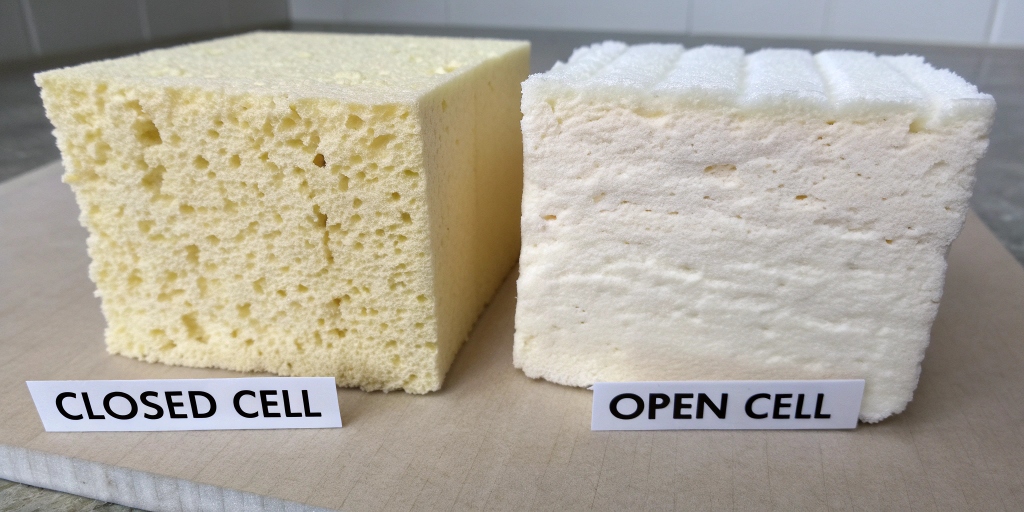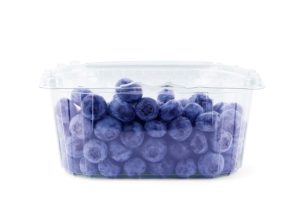What Insulation Works Best for Summer Heat: Keeping Your Home Cool
Sweltering summer heat got you cranking the air conditioner and dreading high energy bills? Choosing the right insulation can transform your home into a comfortable oasis, even in hot climates. Proper insulation reduces unwanted heat, lowers cooling costs, and maintains a comfortable temperature in living spaces. So, what insulation works best for summer heat? This article explores the best types of insulation for combating summer heat, using insights from experts like the Department of Energy. Ready to keep your house cool and save on energy costs? Let’s dive in!
Why Insulation Matters for Summer Heat
Insulation isn’t just for cold climates—it’s a game-changer for hot summers too. In regions with humid climates or dry climates, proper home insulation blocks external heat, reducing energy consumption for air conditioning systems. According to the Department of Energy’s Energy Saver program, well-insulated homes can save up to 20% on cooling costs. Insulation works by increasing thermal resistance, slowing heat transfer, and creating an effective air barrier. But which insulation type is the best choice for extreme temperatures? Let’s explore the options.
Top Insulation Types for Summer Heat
Several types of insulation excel at keeping homes cool in hot climates. Each offers unique benefits, from energy efficiency to ease of installation. Here’s a breakdown of the top contenders:
- Fiberglass Insulation: A common choice, fiberglass insulation uses glass fibers to trap air, reducing heat conduction. It’s cost-effective and suits wall cavities and attic floors.
- Spray Foam Insulation: Closed-cell spray foam creates an airtight seal, ideal for tight spaces like exterior walls. Its excellent resistance to heat makes it a durable choice.
- Cellulose Insulation: Made from recycled material, this loose-fill insulation is treated with boric acid for fire resistance. It’s perfect for attic insulation and humid climates.
- Mineral Wool Insulation: Known for its thermal insulation properties, mineral wool resists radiant heat and is an excellent choice for foundation walls.
- Reflective Insulation and Radiant Barriers: These reflective materials bounce solar energy away, reducing radiant heat in attic spaces. They’re a top pick for hot summers.
- Cementitious Foam Insulation: This foam insulation, with a foam core and ceiling with gas bubbles, offers high thermal resistance for concrete walls.
Each insulation type suits different needs, but their effectiveness depends on proper installation by professional insulation installers.
How Insulation Combats Summer Heat
Insulation reduces three types of heat transfer: conduction, convection, and radiation. In hot climates, radiant heat from the sun can make indoor temperatures soar. Radiant barriers and reflective insulation block this heat, while spray foam and cellulose insulation minimize convective heat flow and downward heat transfer. For example, closed-cell polyurethane foam insulation in inch walls can achieve an average wall R-value of R-20 or higher, per the Department of Energy. This keeps the indoor environment cool, reducing reliance on ceiling fans or AC equipment.
Best Insulation for Specific Areas of the Home

Different parts of the home require tailored insulation to combat summer heat effectively. Here’s how to insulate key areas:
- Attic Insulation: Attic spaces are prone to excessive heat buildup. Loose-fill insulation, like cellulose or fiberglass, or radiant barriers on attic surfaces can cut cooling costs by 15%, per Energy Saver.
- Exterior Walls: Spray foam or mineral wool insulation in wall cavities creates an airtight barrier, preventing air leakage and maintaining cooler temperatures.
- Foundation Walls: Closed-cell foam or fibrous board insulation in concrete block walls ensures structural integrity while blocking external heat.
- Floor Joists and Attic Hatch: Use foam board insulation or continuous insulation to seal gaps, preventing heat from entering living spaces.
- Plumbing Penetrations: Spray foam seals tight spaces around pipes, ensuring an effective air barrier.
Proper ventilation, such as controlled fresh-air ventilation, complements insulation to prevent mildew growth and maintain indoor air quality.
Benefits of Insulation for Summer Heat
Investing in quality insulation offers multiple benefits for homeowners in hot climates. A 2023 study by Koala Insulation found that homes with proper insulation reduced energy usage by up to 25% during summer. Other advantages include:
- Lower Energy Bills: Effective insulation reduces cooling costs, saving money on energy bills.
- Comfortable Living Environment: Insulation maintains a comfortable temperature, even during extreme heat.
- Reduced Carbon Footprint: Energy-efficient homes use less power, lowering environmental impact.
- Protection Against Mildew: A vapor barrier, like plastic film, prevents moisture buildup in humid climates.
- Durability: Options like closed-cell foam or mineral wool are long-lasting, even in extreme climates.
These benefits make insulation an attractive option for the residential construction market, especially in regions with hot summers.
Choosing the Right Insulation for Your Home
Selecting the best insulation depends on your home’s needs, budget, and climate. Consider these factors:
- Climate: In dry climates, radiant barriers excel at reflecting solar energy. In humid climates, closed-cell spray foam prevents moisture issues.
- R-Value: Higher R-values, like those of closed-cell polyurethane foam (R-6 per inch of thickness), offer better thermal resistance.
- Installation Method: Loose-fill insulation is ideal for attic floors, while spray foam suits tight spaces like plumbing penetrations.
- Cost: Fiberglass and cellulose are economical options, while spray foam and cementitious foam insulation are more expensive options.
Consulting a professional insulation contractor ensures proper installation, maximizing energy savings and comfort.
Installation Tips for Maximum Effectiveness
Proper installation is critical for insulation to perform well. Poorly installed insulation can lead to air leakage, reducing its effectiveness. Follow these tips:
- Hire Professional Insulation Installers: Experts ensure precise fastening during installation, especially for spray foam or fibrous board insulation.
- Use Special Equipment: Loose-fill insulation requires blowers for even distribution in attic spaces.
- Include a Vapor Barrier: In humid climates, a plastic film barrier prevents moisture from compromising insulation.
- Seal Gaps: Use spray foam for plumbing penetrations or attic hatches to create an air seal.
The installation process, when done correctly, ensures a comfortable living environment and long-term energy efficiency.
Challenges and Considerations
While insulation is highly effective, there are challenges to address. Improper installation can lead to air space gaps, reducing thermal resistance. Additionally, some materials, like traditional batt insulation, may settle over time, decreasing performance. Homeowners in cool climates transitioning to hot summers should reassess their insulation to handle extreme temperatures. Finally, upfront costs for options like closed-cell foam can be high, but the energy savings often justify the investment over time.
Insulation for Different Climates
While this article focuses on hot climates, insulation choices vary by region. In cool climates, traditional batt insulation retains heat effectively. In extreme climates, combining foam board insulation with radiant barriers offers versatility. For homes in dry climates, reflective insulation is a common choice, while humid climates benefit from closed-cell foam’s resistance to moisture. Understanding your region’s needs ensures you make a durable choice.
Practical Tips for Homeowners
To maximize insulation’s benefits, integrate these habits:
- Combine with Ceiling Fans: Fans enhance constant cooling, reducing reliance on air conditioning.
- Check R-Values: Aim for an average wall R-value of R-13 to R-21 for inch walls, per the Department of Energy.
- Maintain Ventilation: Proper ventilation prevents heat buildup in unconditioned spaces like attics.
- Consider Concrete Forms: For new builds, concrete forms with concrete-filled cores boost insulation in foundation walls.
These steps, paired with quality insulation, keep your home cool and energy-efficient.
Conclusion
The right insulation can make all the difference in battling summer heat. From cementitious foam insulation to radiant barriers, options like spray foam and cellulose offer excellent resistance to external heat. By choosing the right insulation type and ensuring professional installation, homeowners can enjoy cooler temperatures, lower energy bills, and a reduced carbon footprint. Whether you’re insulating attic spaces or foundation walls, these solutions create a comfortable living environment.
Ready to beat the heat? Share your insulation experiences in the comments or explore more energy-saving tips on our blog. Start cooling your home today!
FAQs
What’s the best insulation for hot climates?
Radiant barriers and closed-cell spray foam excel at blocking summer heat, per the Department of Energy.
How does insulation reduce cooling costs?
Insulation minimizes heat transfer, reducing air conditioning use by up to 20% (Energy Saver, 2023).
Is spray foam insulation worth the cost?
Yes, its airtight seal and high R-value make it ideal for hot and humid climates.
Can I install insulation myself?
Professional installation is recommended for spray foam or loose-fill to ensure an effective air barrier.
How do radiant barriers work?
They reflect solar energy, reducing radiant heat in attics and keeping indoor temperatures cool.
Read More:






